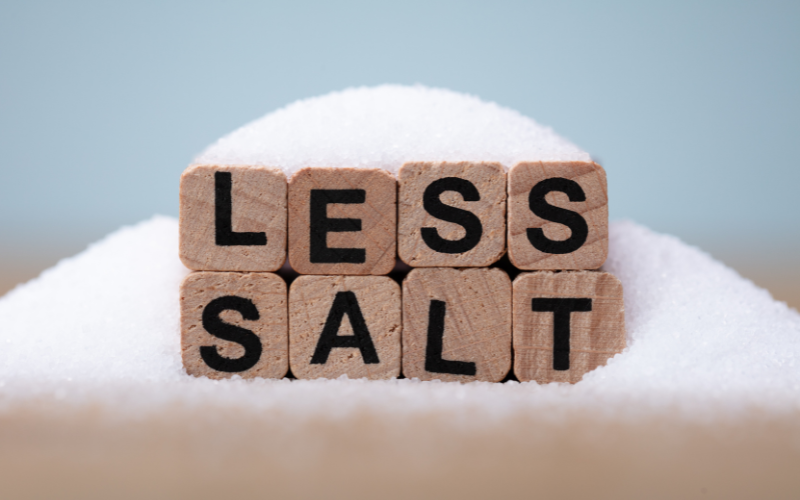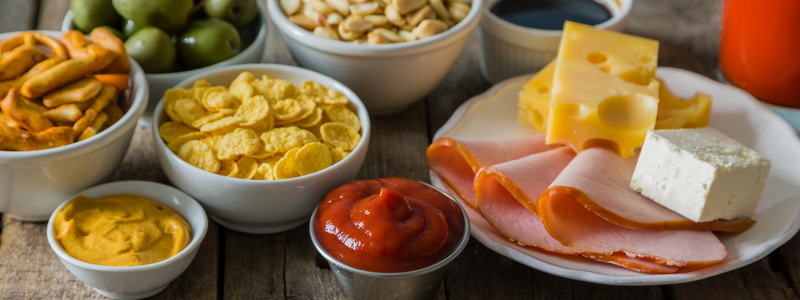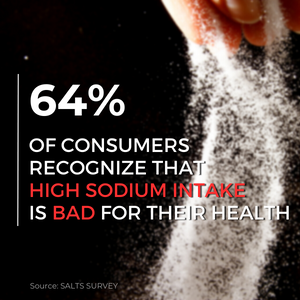
Salt is an important ingredient for food formulators and has many functions in food processing and flavoring. Nearly 90 percent of Americans consume significantly higher sodium than recommended by the 2015-2020 Dietary Guidelines for Americans published by the U.S. Department of Health and Human Services. Scientists are warning us that diets high in sodium have been linked to cardiovascular health issues. As a result, the Food and Drug Administration (FDA), The Center for Disease Control and Prevention (CDC), and the American Heart Association (AHA) put significant effort into reducing population-level sodium intake through food labeling, consumer education, and recommendations for product reformulations.
Excessive sodium intake is one of the leading risk factors for an unhealthy diet and is responsible for 1.8 million deaths annually. The World Health Organization (WHO) believes that many of those lives could be saved by imposing mandatory limits on salt levels in processed foods.
The Dietary Guidelines for Americans published by the FDA recommend adults consume no more than 2,300 mg of sodium per day. However, on average Americans consume around 3,400 mg, which much higher than the recommended limit.
REDUCE SODIUM AND KEEP THE FLAVOR WITH NATURAL LOW SODIUM SEA SALTS
Salt is added to foods for various reasons, including flavor enhancement and preservation, as well as color and texture improvement. Sodium reduction will have a direct impact on the flavor of the product. In products where sodium reduction would only affect the flavor, like in soups, sauces, or pizza, reducing sodium can be as easy as swapping traditional salt for a lower sodium alternative.
A&B Ingredients offers formulators a clean-label natural solution for sodium reduction in food and beverage applications. Two Seas Sea Salts® are naturally low sodium sea salts and a clean-label alternative to table salt. These sea salts are harvested from the mineral-rich Dead and Red Seas. As a result, these salts are naturally high in potassium, containing 50 percent less sodium.
Two Seas Sea Salts® can be used as a one-to-one substitution for table salt in various applications. These unique natural salt blends have a clean salty taste and don't produce any bitter taste attributes like other common salt alternatives. With Two Seas Sea Salts®, formulators can replace salt in soups, snacks, cured meats, and similar products, reducing sodium by up to 57% and maintaining the flavor profile of foods.
REPLACING SODIUM WITH POTASSIUM FOR A HEALTHIER NUTRITIONAL STATEMENT
Potassium and sodium are both essential minerals that play important roles in the human body. Potassium chloride is a common salt substitute that can be used to reduce the sodium content of foods. It tastes similar to table salt and can be used in cooking and seasoning foods. Potassium is important for the proper function of muscles and the heart, as well as for maintaining healthy blood pressure levels. It also helps to reduce the risk of stroke and kidney stones. However, it is crucial to maintain the balance between sodium and potassium for good health.
In general, most people consume too much sodium and not enough potassium, which can lead to adverse health effects. The American Heart Association recommends that adults consume no more than 2,300 milligrams of sodium per day and ideally should aim for no more than 1,500 milligrams per day. The recommended daily intake of potassium is 4,700 milligrams for an average adult a day.

MANY SUPERMARKET FOODS ARE HIGH IN SODIUM
Too often, consumers don't realize how much sodium is present in the foods they buy and eat daily. Too many foods sold in grocery stores already have high levels of sodium. That makes it difficult for consumers to control how much sodium they eat. According to the FDA, over 70 percent of salt in our diet comes from restaurant meals, prepackaged and processed foods, not from the table salt added to the food.
Since most sodium comes from prepared and processed foods, the government issued voluntary guidelines and urged manufacturers to develop new products or reformulate existing products to have lower sodium levels. While some companies have reduced sodium in certain foods, other manufacturers continue adding higher salt levels despite the known health risks. One reason for adding high levels of salt is attributed to the fact that years of adding too much salt have desensitized people's taste buds to excessive levels.
According to
the SALTS survey, taste is a top factor for U.S. consumers, followed by health, nutritional value, and cost. While 64 percent of consumers recognized that high sodium intake was bad for their health, one in two Americans said that low-sodium foods were bland and tasteless. Therefore, maintaining the taste and a balanced flavor in lower sodium applications should be a top consideration for food formulators.
"There is noticeable pressure on the food industry to lower sodium levels in foods without affecting the taste profile of the final products. A&B Ingredients offers turn-key solutions to reduce sodium content and maintain the flavor. Low sodium sea salts are a natural, clean-label solution for sodium reduction in high-sodium foods," -- explained Gil Bakal, Managing Director at A&B Ingredients.
THE WHO CALLS FOR URGENT ACTION TO MEET SODIUM INTAKE GUIDELINES
In March 2023, the WHO released a new report warning that seven million people could die from diseases linked to excessive salt consumption by the end of the decade. The WHO calls for governments to take immediate action and impose tighter restrictions on salt. In the report, the health agency suggested implementing stricter sodium targets for food, labeling salt content more clearly on packaging, and increasing public awareness of the health risks associated with eating high-salt foods.
Reducing sodium intake has the potential to prevent hundreds of thousands of premature deaths and illnesses in the coming years. As the public becomes more aware of the negative impact of high-sodium diets, consumers will seek lower-sodium alternatives. Since the majority of sodium comes from prepared and processed foods, food manufacturers have the opportunity to develop new products or reformulate existing products to have lower sodium levels. Established companies and new brands can use the sodium reduction trend to cater to the health-conscious market.
Both the WHO and FDA have published voluntary sodium reduction guidelines that give food brands an opportunity to make their products healthier, improve the nutritional labels, and ultimately offer consumers a better product.




